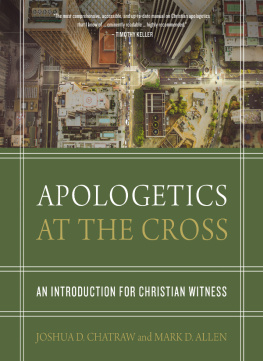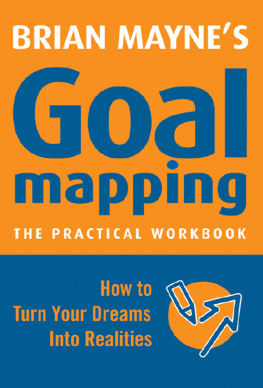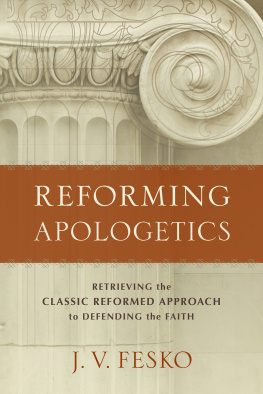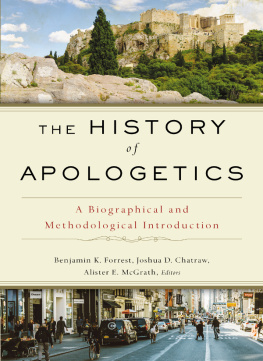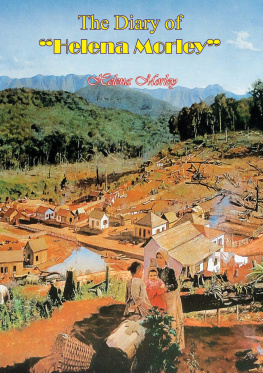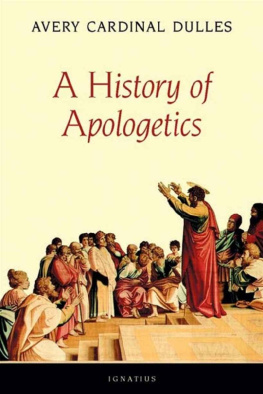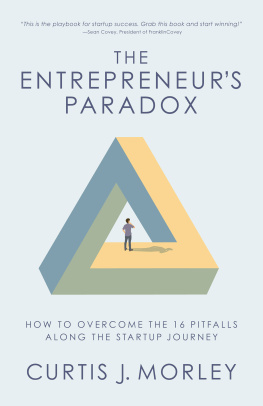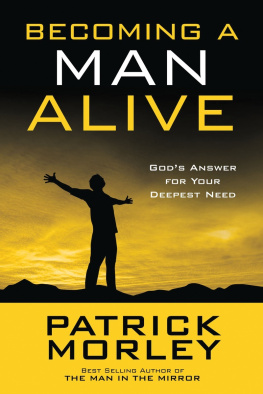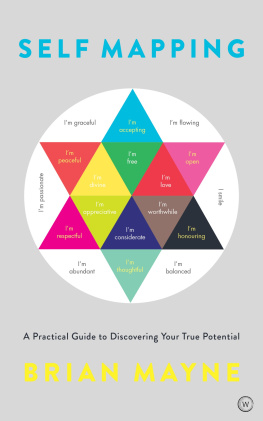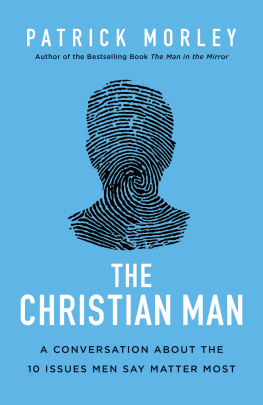Brian K. Morley - Mapping Apologetics: Comparing Contemporary Approaches
Here you can read online Brian K. Morley - Mapping Apologetics: Comparing Contemporary Approaches full text of the book (entire story) in english for free. Download pdf and epub, get meaning, cover and reviews about this ebook. year: 2015, publisher: InterVarsity Press / IVP Academic, genre: Religion. Description of the work, (preface) as well as reviews are available. Best literature library LitArk.com created for fans of good reading and offers a wide selection of genres:
Romance novel
Science fiction
Adventure
Detective
Science
History
Home and family
Prose
Art
Politics
Computer
Non-fiction
Religion
Business
Children
Humor
Choose a favorite category and find really read worthwhile books. Enjoy immersion in the world of imagination, feel the emotions of the characters or learn something new for yourself, make an fascinating discovery.

- Book:Mapping Apologetics: Comparing Contemporary Approaches
- Author:
- Publisher:InterVarsity Press / IVP Academic
- Genre:
- Year:2015
- Rating:3 / 5
- Favourites:Add to favourites
- Your mark:
- 60
- 1
- 2
- 3
- 4
- 5
Mapping Apologetics: Comparing Contemporary Approaches: summary, description and annotation
We offer to read an annotation, description, summary or preface (depends on what the author of the book "Mapping Apologetics: Comparing Contemporary Approaches" wrote himself). If you haven't found the necessary information about the book — write in the comments, we will try to find it.
Mapping Apologetics: Comparing Contemporary Approaches — read online for free the complete book (whole text) full work
Below is the text of the book, divided by pages. System saving the place of the last page read, allows you to conveniently read the book "Mapping Apologetics: Comparing Contemporary Approaches" online for free, without having to search again every time where you left off. Put a bookmark, and you can go to the page where you finished reading at any time.
Font size:
Interval:
Bookmark:

Apologetics
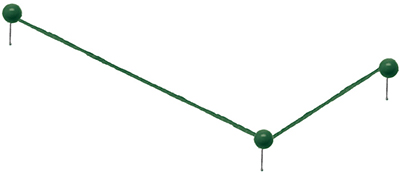


www.IVPress.com/academic
InterVarsity
Press P.O. Box 1400,
Downers Grove, IL
60515-1426
ivpress.com
2015 by Brian K. Morley
All rights reserved. No part of this book may be reproduced in any form without written permission from InterVarsity Press.
InterVarsity Press is the book-publishing division of InterVarsity Christian Fellowship/USA, a movement of students and faculty active on campus at hundreds of universities, colleges and schools of nursing in the United States of America, and a member movement of the International Fellowship of Evangelical Students. For information about local and regional activities, visit intervarsity.org.
All Scripture quotations, unless otherwise indicated, are taken from the New American Standard Bible, copyright 1960, 1962, 1963, 1968, 1971, 1972, 1973, 1975, 1977, 1995 by The Lockman Foundation. Used by permission.
Cover design: David Fassett
Images: red pushpin: vicm/iStockphoto
red ribbon: t_kimura/iStockphoto
topographical map: drlogan/iStockphoto
ISBN 978-0-8308-9704-9 (digital)
ISBN 978-0-8308-4067-0 (print)
To my wife Donna:
after God himself,
his greatest gift.
Presuppositionalism
Reformed Epistemology
Combinationalism
Classical Apologetics
Evidentialism

On March 9, 1974, Japanese lieutenant Hiroo Onoda walked out of the jungle on a remote island in the Philippines, finally convinced that World War II was overtwenty-nine years after it had ended. Trained as an intelligence officer in guerilla warfare, he was told to survive at all costs. No matter what happened, his superiors would come for him.
Just a few months after his arrival in 1944, the allies overwhelmed Japanese defenses, and Hiroos band of five hid deep in the jungle, surviving on what they could find. When the war ended many attempts were made to find and convince the remaining soldiers to come out. Newspapers and even letters from relatives were left, which they found, along with leaflets. But how could the war have ended so quickly? And why were there spelling errors in the leaflets? Hiroos own brother even came and attempted to speak to him over a loudspeaker. The band considered each piece of evidence, and always concluded that the enemy was trying to deceive them. One by one they died, the last one after twenty-seven years in hiding, leaving Hiroo alone.
Finally, a Japanese student tracked Hiroo down and befriended him. He could not surrender, Hiroo explained, until his commanding officer ordered him to do so. The student returned to Japan, and the government found his commander, now a bookseller, who returned in his tattered uniform and personally gave the order. Hiroo, still in his uniform, with sword on his side and his working rifle in his hand, was relieved of duty, and wept. Philippine president Ferdinand Marcos pardoned him for the approximately thirty people he had killed over the years, because the soldier had believed he was still at war. Hiroo returned to a world vastly changed, realizing that his beliefs had been completely wrong for nearly thirty years.
Hiroo illustrates the problem of belief, what to accept as evidence and as valid explanation, how to weigh assumptions, and much more. We make such complex decisions in our own lives, over both minor beliefs and major ones. And we all come to and hold the most crucial beliefs of our existenceour worldviewentailing whether to believe in a God, how to live, and what to do about an afterlife, if there is one.
There could not be a more important question than how we are to decide what to believe. That is the subject of this book.
There are a number of conflicting approaches, as we shall see. Some approaches have been used to support a wide variety of worldviews, and some have been developed and used in a uniquely Christian context. I have chosen those most discussed today, the live options, as represented by those who have had a major part in shaping them. In a few cases the choice was difficult, and different ones could have been made. I would like to have written much more, covering the work of more apologists in each of the major categories, but the books total length would have been daunting.
I have tried to represent each thinker fairly, as they would describe their views. I have had the privilege of meeting and talking to most of the those I have written about (including the late Greg Bahnsen), and whether by personal contact or only via their writings, I am glad to have been exposed to such brilliant minds who have worked hard on these complex issues over a lifetime. I am grateful to those who, despite very busy schedules, were able to review what I had written about them and to offer some input: John Frame, Alvin Plantinga, Mark Hanna, Gordon Lewis (on his views and E. J. Carnells), Norman Geisler, Richard Swinburne, John Warwick Montgomery (who also gave helpful input on my concluding chapter) and Gary Habermas. James N. Anderson kindly went over my chapter on Cornelius Van Til and gave some helpful input. Their input was not only valuable but also reassuring and encouraging. Im also grateful to InterVarsity Presss anonymous reviewer for detailed, thoughtful input.
I have tried to be not only fair but also clear, so as to be accessible to readers who have no special background in apologetic methodology. To that end I have explained terms and kept specialized words to a minimum. I have traded the technical rigor that characterizes purely academic writing for readability for a wider audience (and in some cases have refrained from referencing more technical sources). Incidentally, I have occasionally used a male pronoun to refer to both men and women where my intention is obvious, and I sometimes use both a male and a female pronoun (he or she) to make that clear. Where it is not awkward I use their. Biblical quotations are from the New American Standard Bible.
Along the way I repeat a few things briefly, by way of reminder, so the reader does not have to search back through the book, and so that the chapters stand alone better, in order to aid the reader who does not go through the book quickly. The structure of every chapter is not identical. Some stop to compare apologetic approaches, and in others more time is spent exploring the criticisms.
To benefit the reader with some background in the topic of the book, and to serve the advanced reader, I have also sought where possible to bring out the deeper, underlying issues separating the views, most of which are philosophical, having to do with issues such as the following: how we know, how we have certainty (and how certain we can be); the relation between faith and evidence; the possibilities of reasoning by way of deduction, induction and abduction; the role of assumptions and presuppositions; the relation between evidence and worldview; the validity of intuition as a way of knowing and its possible divine origin; and whether we can know some things without inferring them from other things we know (i.e., foundationalism). Through all this I hope to bring the issues into sharper focus so as to facilitate more constructive dialogue on the subject of apologetic methods.
Font size:
Interval:
Bookmark:
Similar books «Mapping Apologetics: Comparing Contemporary Approaches»
Look at similar books to Mapping Apologetics: Comparing Contemporary Approaches. We have selected literature similar in name and meaning in the hope of providing readers with more options to find new, interesting, not yet read works.
Discussion, reviews of the book Mapping Apologetics: Comparing Contemporary Approaches and just readers' own opinions. Leave your comments, write what you think about the work, its meaning or the main characters. Specify what exactly you liked and what you didn't like, and why you think so.

